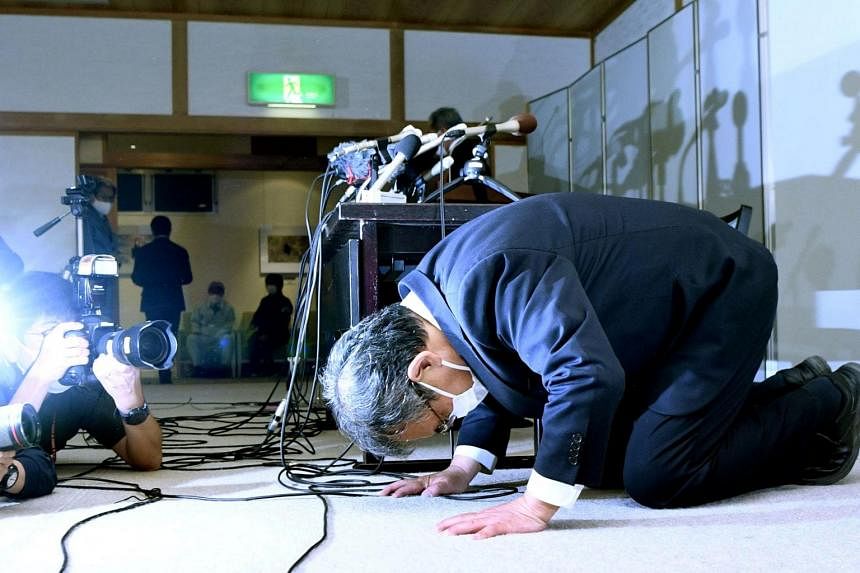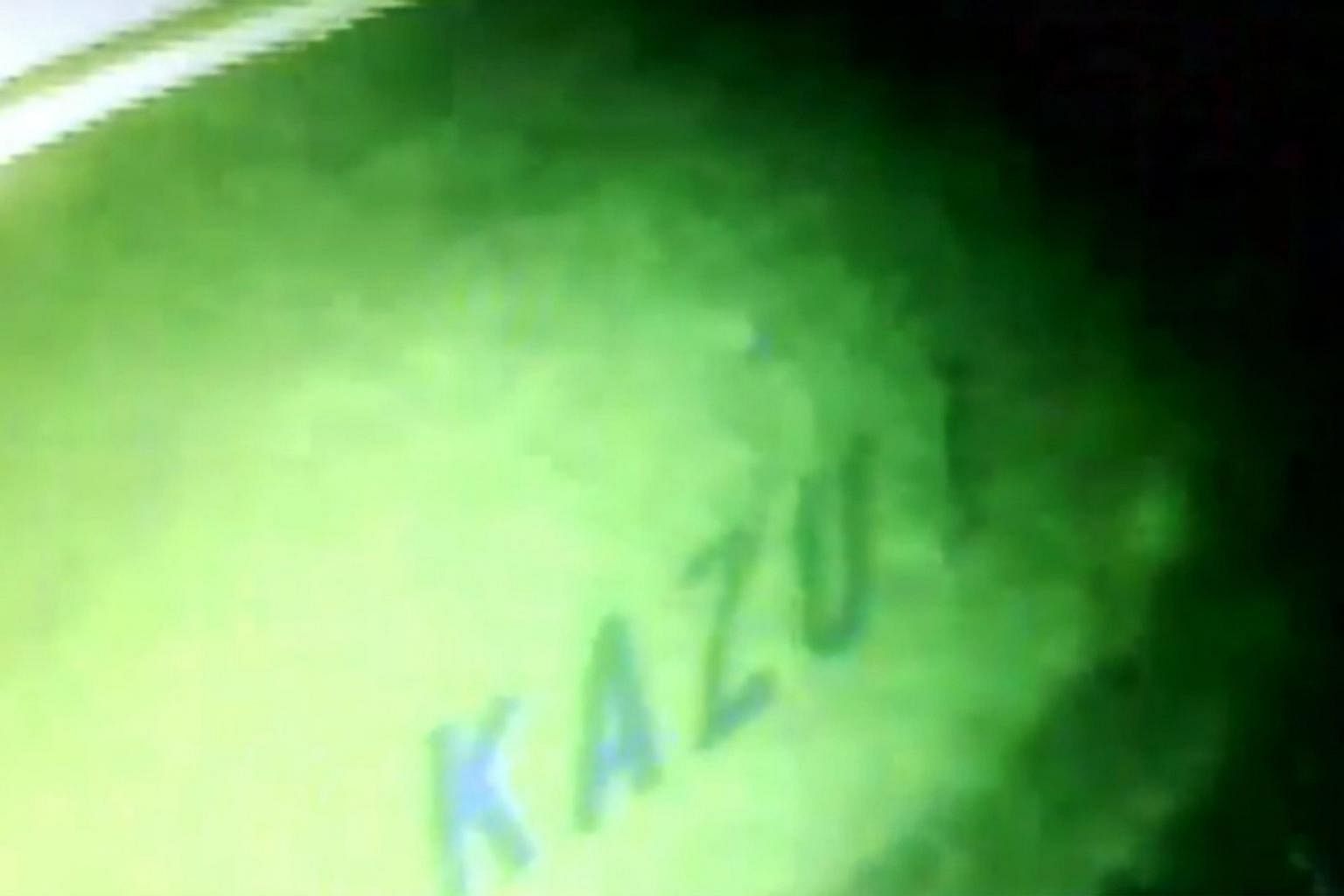Japan rattled by apparent negligence in fatal Hokkaido boat tragedy
Sign up now: Get ST's newsletters delivered to your inbox

A Japan Coast Guard helicopter flying in search of the tour boat in Hokkaido on April 29, 2022.
PHOTO: EPA-EFE
Follow topic:
TOKYO - When the ill-fated sightseeing boat Kazu I sailed out to sea off Hokkaido with 26 people - 24 passengers and two crew - on board on April 23, it had not just ignored warnings of gusts and choppy waves but also lacked a working satellite phone.
To make matters worse, the radio antenna in the office of Shiretoko Yuransen, the owner and operator of the 19-ton boat, was also broken.
It was another local tour operator that detected the boat's distress signal via radio and alerted the coast guard.
Japan has been rattled by the apparent gross negligence behind what looks to be an avoidable fatal tragedy at sea.
The Kazu I was found lying on the seabed in 120m-deep water on Friday (April 29) near the Kashuni Falls on the Shiretoko Peninsula, which received Unesco World Heritage recognition in 2005.
As at Saturday, a week since the tragedy, 14 bodies have been recovered and another 12 are still missing. The youngest person on board was a three-year-old girl from Tokyo, Nanako Kato. All were from nine prefectures across Japan.
The other passengers included Mr Tomoya Suzuki, 22, from Hokkaido, who intended to propose to his girlfriend, cited in media reports by her nickname "Yucchi", on the boat.
Their relatives have applied for a posthumous marriage licence on their behalf, though this is not legally recognised.
Also on board was Mr Shunsuke Koike, 28, from Fukushima, who had succeeded his father as chief executive of a family-run chain of supermarkets in 2019.
His friends said that the Keio University graduate, who was proficient in English and had studied in Britain, was about to get married and had dreams of creating his own brand of whisky.
The president of Shiretoko Yuransen, the boat operator, Mr Seiichi Katsurada, 58, who is now the subject of a criminal probe, admitted impassively at a news conference four days after the tragedy that it was a "mistake" in hindsight to allow the vessel to set sail.
While he knelt on the floor and prostrated himself in a dogeza bow - a sign of deep apology in Japan - this was lambasted as just for show after he qualified his apology by appearing to shift the blame onto the victims.
It was the passengers, he said, who had insisted on going out to sea despite the warnings, having journeyed all the way to Hokkaido's remote north-eastern tip.
"I made the decision (to let the boat sail), so that the passengers can better appreciate the heavy seas and would want to turn back," he said.

Media reports have painted Mr Katsurada as a money-grabbing individual who has made questionable decisions since taking over the company in 2016.
The sunken Kazu I had been on its first trip for the season, and the company president said it "stood to reason that there were many items on the checklist that were not crossed off yet".
While he knew the radio antenna in his office and the satellite phone on the ship were broken, he saw no need to cancel the tour as "we could communicate via cellphones or other operators' radios".
But the boat was in an area with patchy mobile reception when it started taking on water, meaning that Shiretoko Yuransen's office was not able to immediately respond nor speak to the skipper Noriyuki Toyoda, 54.
Kyodo News cited unnamed sources as saying that Mr Katsurada has a history of forcing skippers to sail to sea even in treacherous conditions, lashing out at captains for cancelling tours due to safety reasons.
This led to a spate of resignations in the company as veteran skippers quit, with the employee headcount cut from seven to three within two years.
Mr Toyoda, who used to drive an amphibious bus, was himself inexperienced in sailing in rough waters but was given his captain stripes by the company within one year when the industry norm was three.

A handout picture taken by Japan Maritime Self-Defense Force of the tourist boat ‘Kazu I’ on April 23, 2022.
PHOTO: EPA-EFE
Mr Katsurada told the news conference that he had given Mr Toyoda conditional approval to set sail on the basis that he would turn back in bad weather.
Transport Minister Tetsuo Saito slammed this as unthinkable and said Mr Katsurada had clearly "lacked a sense of ownership and responsibility".
The waves were 32cm when the boat set sail from Utoro Port in the town of Shari on what was supposed to be a three-hour journey, but the height rose to 3m at 1.30pm.
The boat Kazu I was not designed for stormy waters, the Asahi newspaper reported. Built in 1985, it was formerly known as the Hikari VIII and sailed the Seto Inland Sea.
Kazu I had run into trouble twice last year, the Transport Ministry said. In May, it collided with a floating object, injuring three passengers, and, a month later, ran aground in shallow water.
The April 23 tragedy has exposed what has been an industry blind spot, something the government intends to rectify with better oversight.
The Japan Coast Guard said there are at least a hundred accidents every year involving small vessels that sail out despite warnings of rough weather, with 122 reported in 2020.
The Transport Ministry plans to introduce penalties, including operational bans, if safety management is lacking.

